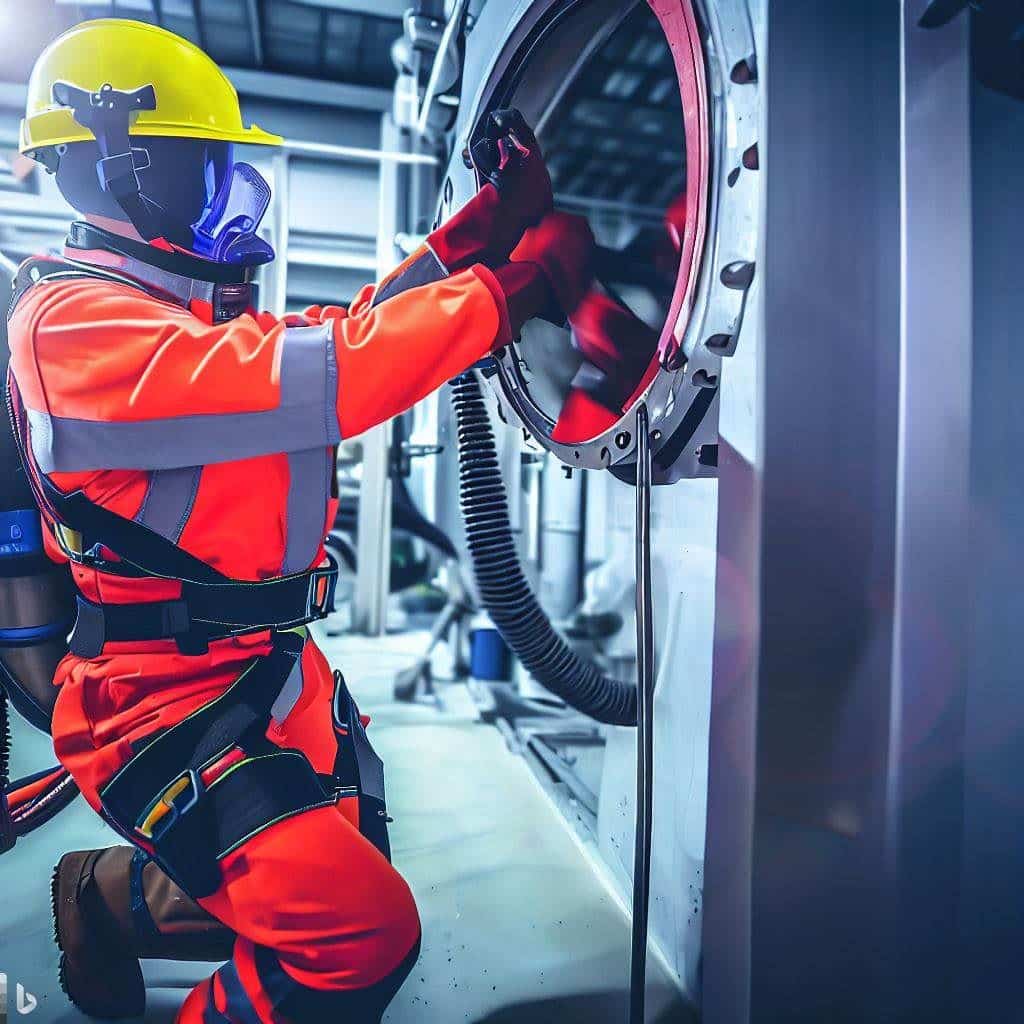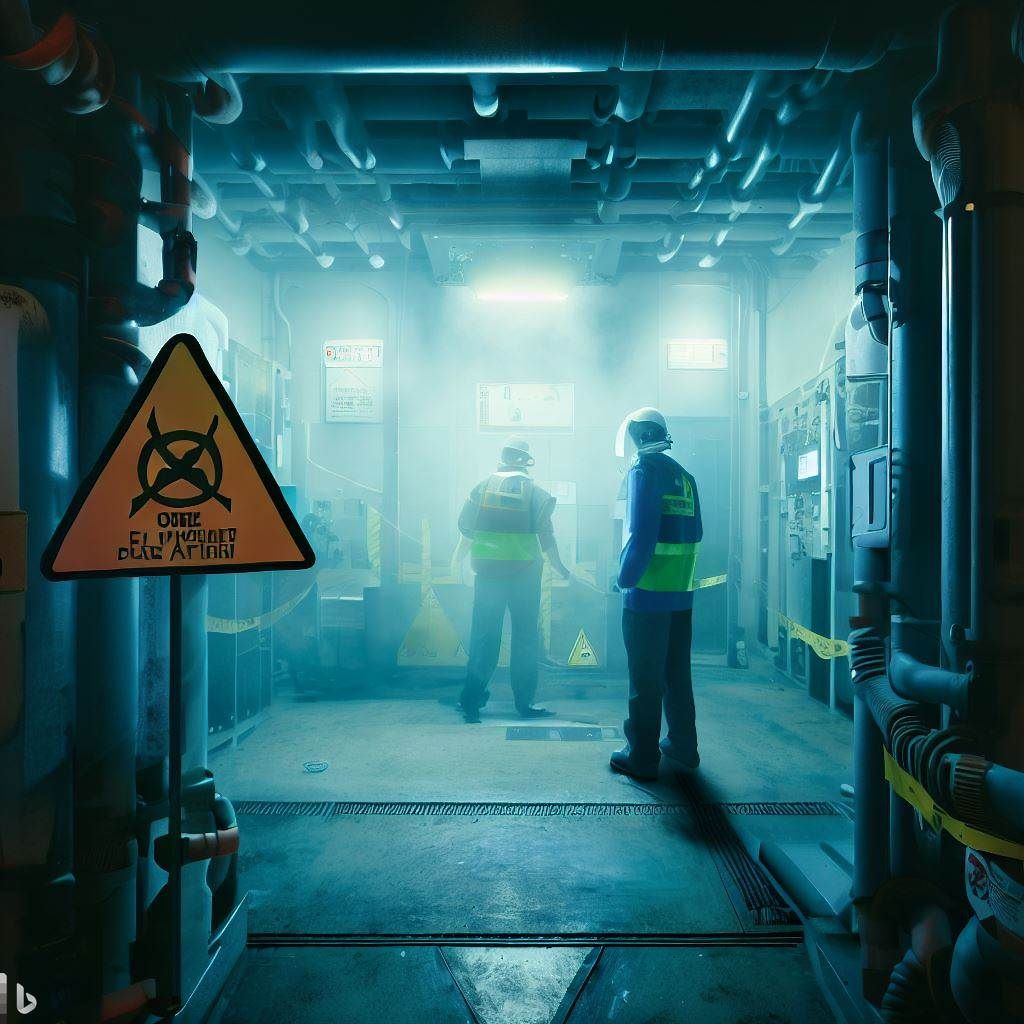Mastering the Essentials: A Comprehensive Guide to Confined Space Attendant Requirements
Confined spaces are common in many industries, including construction, manufacturing, and utilities. These environments pose unique hazards to workers, so it’s essential to have a well-trained confined space attendant on-site.
This comprehensive guide will provide you with the knowledge and tools you need to meet confined space attendant requirements, ensuring the safety and well-being of workers in these challenging environments. As a confined space attendant, you play a critical role in ensuring the safety of workers entering and working in confined spaces.
This guide will walk you through the essentials of understanding confined spaces, the roles and responsibilities of a confined space attendant, essential qualifications and skills, training and certifications, and much more.
By mastering these essentials, you’ll be well-equipped to protect your team and maintain compliance with industry regulations. It’s important to note that confined space attendant requirements may vary depending on the industry, jurisdiction, and specific work environment. Consult your employer or local regulatory agencies for the most up-to-date requirements and guidelines.
Understanding Confined Spaces: Definition and Types
Before we delve into the specific requirements for a confined space attendant, we must understand what confined spaces are and the different types you may encounter. A confined space is an area not designed for continuous human occupancy and has limited means of entry and exit. These spaces can be found in various industries and settings, such as tanks, silos, vaults, tunnels, pipelines, and more.
There are two primary types of confined spaces: non-permit-required and permit-required. Non-permit-required confined spaces do not contain any known hazards or potential for atmospheric changes, and they do not require a permit for entry. However, following proper safety protocols when working in these spaces is still important.
On the other hand, permit-required confined spaces contain known hazards or have the potential for hazardous atmospheric changes, such as oxygen deficiency or toxic gas accumulation. These spaces require a permit for entry, and a confined space attendant must be present to ensure the safety of workers.

Roles and Responsibilities of a Confined Space Attendant
The primary role of a confined space attendant is to ensure the safety of workers entering and working in confined spaces. This involves a wide range of responsibilities, including:
- Pre-entry procedures: Before workers enter a confined space, the attendant must ensure that all necessary safety precautions have been taken. This includes verifying that the space has been properly isolated, ventilated, and tested for atmospheric hazards.
- Monitoring entry and exit: The attendant must maintain a log of all individuals entering and exiting the confined space, ensuring that no unauthorized personnel access the area.
- Communication: The confined space attendant is responsible for maintaining continuous communication with workers inside the space, monitoring their well-being, and providing assistance as needed.
- Emergency response: The attendant must be prepared to initiate rescue procedures and coordinate with emergency response personnel.
- Regulatory compliance: The confined space attendant must ensure that all applicable regulations and guidelines are followed, including proper documentation and record-keeping.
Essential Qualifications and Skills for a Confined Space Attendant
To effectively fulfill the roles and responsibilities outlined above, a confined space attendant must possess specific qualifications and skills. These include:
- Knowledge of confined space hazards: A thorough understanding of the potential hazards associated with confined spaces is essential, including atmospheric, mechanical, and physical hazards.
- Understanding of safety regulations: Attendants must be familiar with relevant safety regulations and guidelines, which may vary depending on the industry and jurisdiction.
- Communication skills: Clear and effective communication is crucial when working in confined spaces, as attendants must relay important information to workers and emergency responders quickly and accurately.
- Attention to detail: Confined space attendants must monitor conditions and follow all safety protocols.
- Decision-making and problem-solving abilities: In an emergency or unexpected situation, attendants must be able to make quick, informed decisions to protect the safety of workers.
Confined Space Attendant Training and Certifications
Proper training and certification are essential for confined space attendants, as they provide the necessary knowledge and skills to perform their duties effectively. Training programs typically cover hazard identification, atmospheric testing, ventilation, communication, and emergency response.
Several organizations offer confined space attendant training and certification programs, including the Occupational Safety and Health Administration (OSHA), the National Fire Protection Association (NFPA), and the American National Standards Institute (ANSI). Choosing a program that meets the specific requirements of your industry and jurisdiction.
In addition to initial training and certification, confined space attendants should participate in ongoing education and refresher courses to stay up-to-date on the latest safety practices and regulations.
Developing a Confined Space Safety Program
An effective confined space safety program protects workers and maintains regulatory compliance. Key components of a successful program should include:
- Identification and assessment: Conduct a thorough evaluation of your workplace to identify all confined spaces and assess the potential hazards associated with each.
- Permit system: Implement a permit system for entry into permit-required confined spaces, ensuring that all necessary safety precautions are taken before workers enter.
- Training and certification: Ensure that all confined space attendants and workers receive appropriate training and certification, and maintain records of completed training.
- Communication and monitoring: Establish clear communication protocols for confined space attendants and workers, and implement a system for monitoring conditions within the space.
- Emergency response and rescue: Develop a comprehensive plan, including rescue procedures and coordination with local emergency responders.
Communication and Monitoring Techniques for Confined Space Attendants
Effective communication and monitoring are crucial for the safety of workers in confined spaces. Confined space attendants should utilize various techniques to maintain continuous contact with workers and monitor conditions within the space, including:
- Visual observation: Whenever possible, the attendant should maintain visual contact with workers inside the confined space, allowing for quick detection of any potential issues.
- Two-way radios: Radios provide reliable communication between attendants and workers, allowing real-time updates on conditions and worker well-being.
- Atmospheric monitoring: Attendants should use gas detection equipment to continuously monitor the atmosphere within the confined space, ensuring that any hazardous conditions are quickly detected and addressed.
- Warning signals: Implement a system of visual and auditory signals to alert workers of potential hazards or the need to evacuate the confined space.
Emergency Response and Rescue Procedures
In an emergency, confined space attendants must be prepared to initiate rescue procedures and coordinate with emergency response personnel. Key components of an effective emergency response plan should include:
- Emergency communication: Establish a clear communication protocol for alerting workers, emergency responders, and other relevant personnel in an emergency.
- Rescue equipment: Ensure all necessary rescue equipment, such as harnesses, ropes, and retrieval systems, is readily available and in good working condition.
- Rescue team: Assemble a trained rescue team capable of responding quickly and effectively to emergencies within confined spaces.
- Coordination with local emergency responders: Establish a relationship with local emergency response agencies, informing them about your confined spaces and the potential hazards they may encounter during a rescue.

Maintaining Compliance with Confined Space Regulations
Meeting confined space attendant requirements is essential for maintaining compliance with industry regulations and ensuring the safety of workers. Key steps for maintaining compliance include:
- Regular audits: Conduct periodic audits of your confined space safety program, ensuring all components function effectively and by applicable regulations.
- Documentation and record-keeping: Maintain accurate records of confined space permits, training, and certifications, as well as any incidents or near misses that occur within confined spaces.
- Ongoing education: Stay informed about changes to confined space regulations and best practices, and ensure that all attendants and workers receive ongoing training and education.
Conclusion: Mastering the Essentials of Confined Space Attendant Requirements
By mastering the essentials of confined space attendant requirements, you’ll be well-equipped to protect your team and maintain compliance with industry regulations. Remember to stay informed about changes to confined space regulations and best practices, and continually evaluate your safety program to ensure its effectiveness. With the right knowledge, training, and dedication, you can play a critical role in ensuring the safety of workers in confined spaces.
Frequently Asked Questions
Q: What is the primary role of a confined space attendant?
A: The primary role of a confined space attendant is to ensure the safety of workers entering and working in confined spaces. This involves many responsibilities, including pre-entry procedures, monitoring entry and exit, communication, emergency response, and regulatory compliance.
Q: What are a confined space attendant’s essential qualifications and skills?
A: Essential qualifications and skills for a confined space attendant include knowledge of confined space hazards, understanding of safety regulations, communication skills, attention to detail, and decision-making and problem-solving abilities.
Q: What training and certifications are required for a confined space attendant?
A: Training and certification programs for confined space attendants typically cover hazard identification, atmospheric testing, ventilation, communication, and emergency response. Several organizations offer confined space attendant training and certification programs, including OSHA, NFPA, and ANSI. Choosing a program that meets the specific requirements of your industry and jurisdiction.
Q: How can I maintain compliance with confined space regulations?
A: Maintaining compliance with confined space regulations involves regular audits, documentation and record-keeping, and ongoing education. Stay informed about changes to confined space regulations and best practices, and ensure that all attendants and workers receive ongoing training and education.
